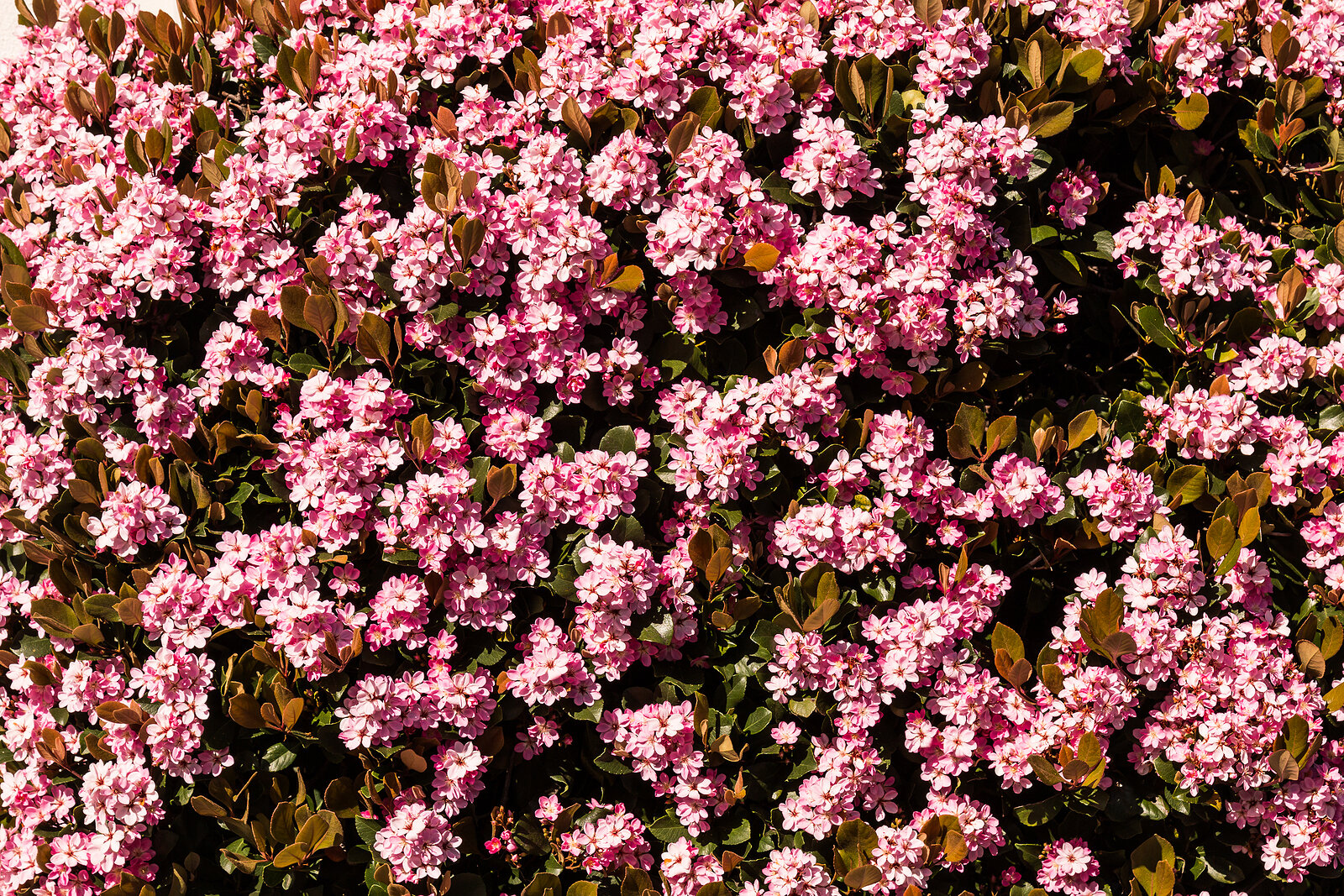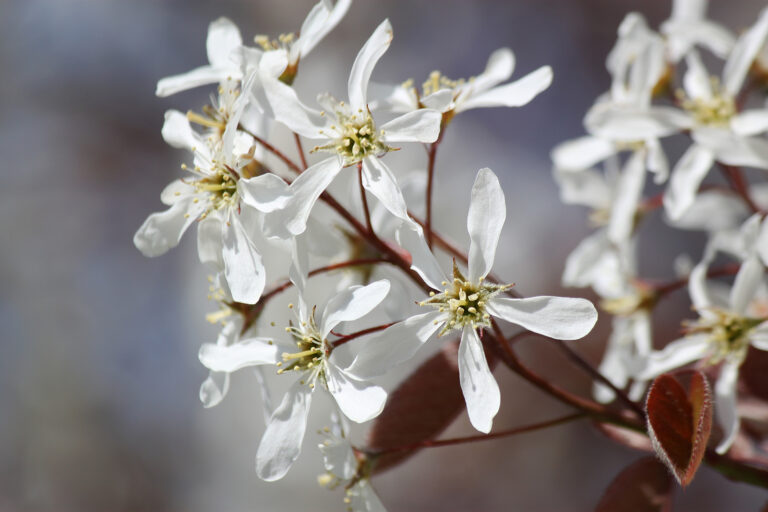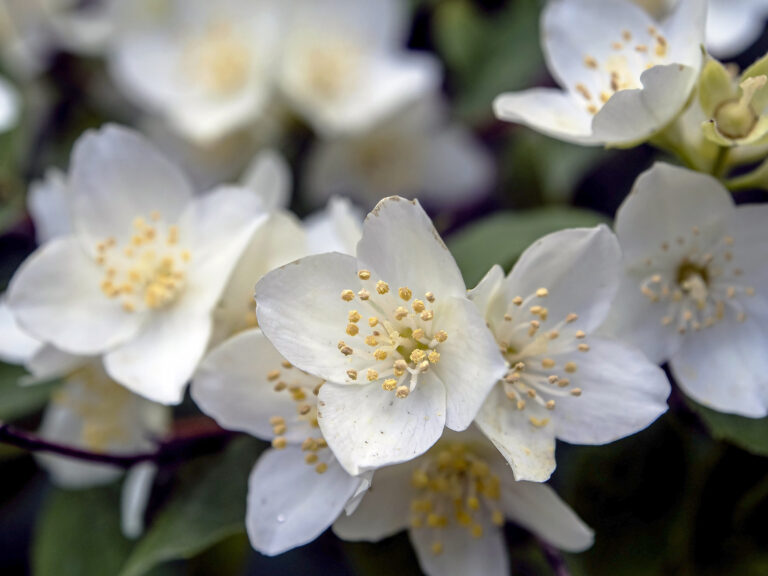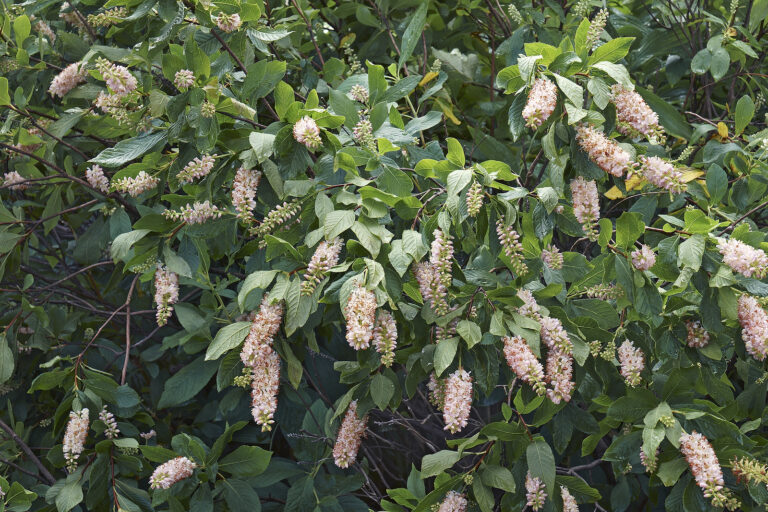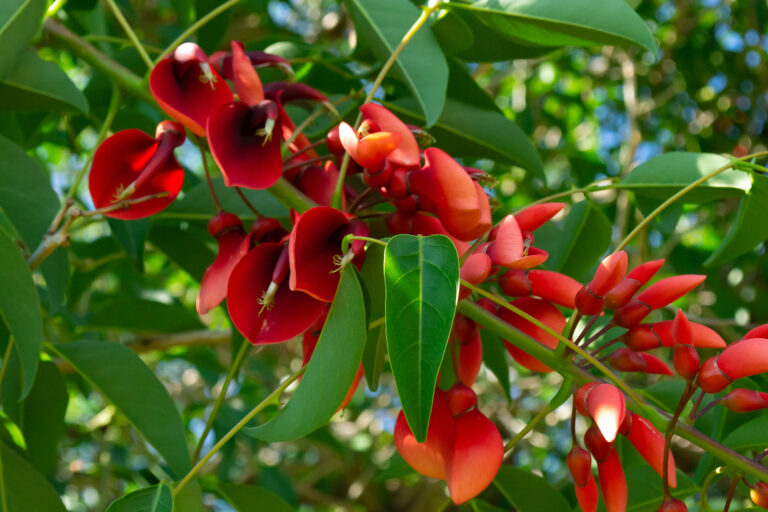How to Grow Rhaphiolepis
Rhaphiolepis–commonly called Indian hawthorn–is an attractive and widely planted small shrub. Its glossy, leathery leaves and compact growth habit make it a good choice for foundation planting and hedges. It is a tough plant that can withstand planting close to drives and streets.
Rhaphiolepis blooms profusely from fall to late spring. Flowers range in color from white to near red. Berrylike dark blue fruit follow flowers. New leaves appear in tones of bronze and red.
Rhaphiolepis is a genus of about 15 species of evergreen shrubs and small tree. Rhaphiolepis grows best in mild climates.
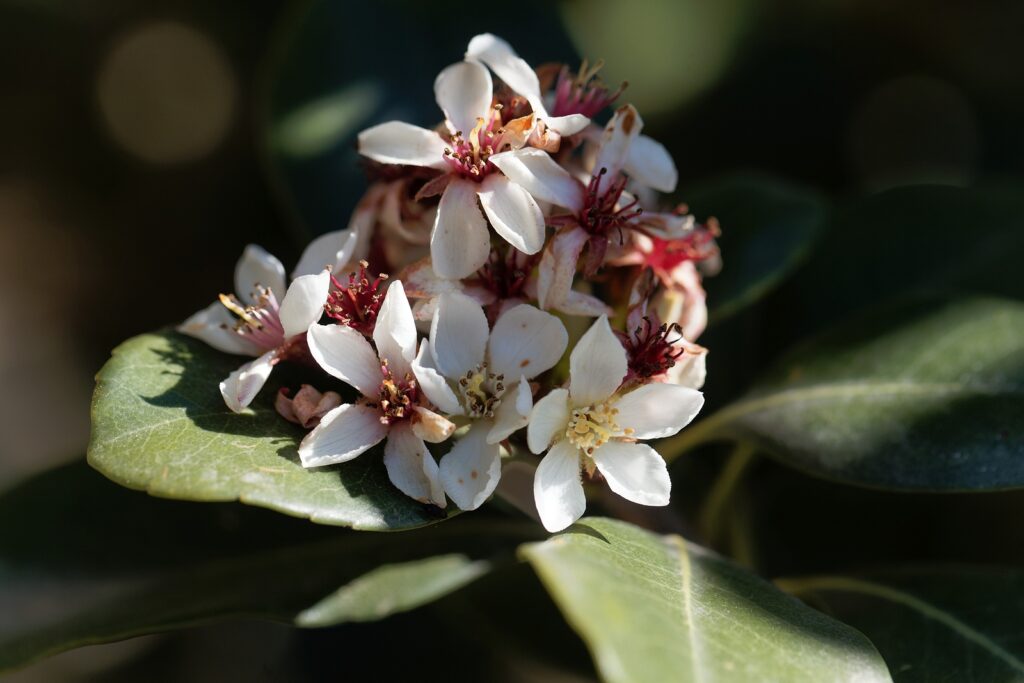
Get to know Rhaphiolepis
- Plant type: Evergreen shrubs
- Growing zones and range: Zones 8 to 11
- Hardiness: Plant where temperatures do not fall below 0°F (-18°C)
- Height and width: 3 to 6 feet (.9-1.8m) tall and wide depending on variety
- Foliage: New leaves n tones of bronze and red
- Flowers: Flowers range in color from white to near red; berrylike dark blue fruit follow flowers
- Bloom time: Late fall or midwinter to late spring
- Uses: Low foundation planting; low hedge or walkway edging; can be grown in containers. shrubs tolerate salt spray.
- Common name: Indian hawthorn, Rhaphiolepis
- Botanical name: Rhaphiolepis
- Family name: Rosaceae
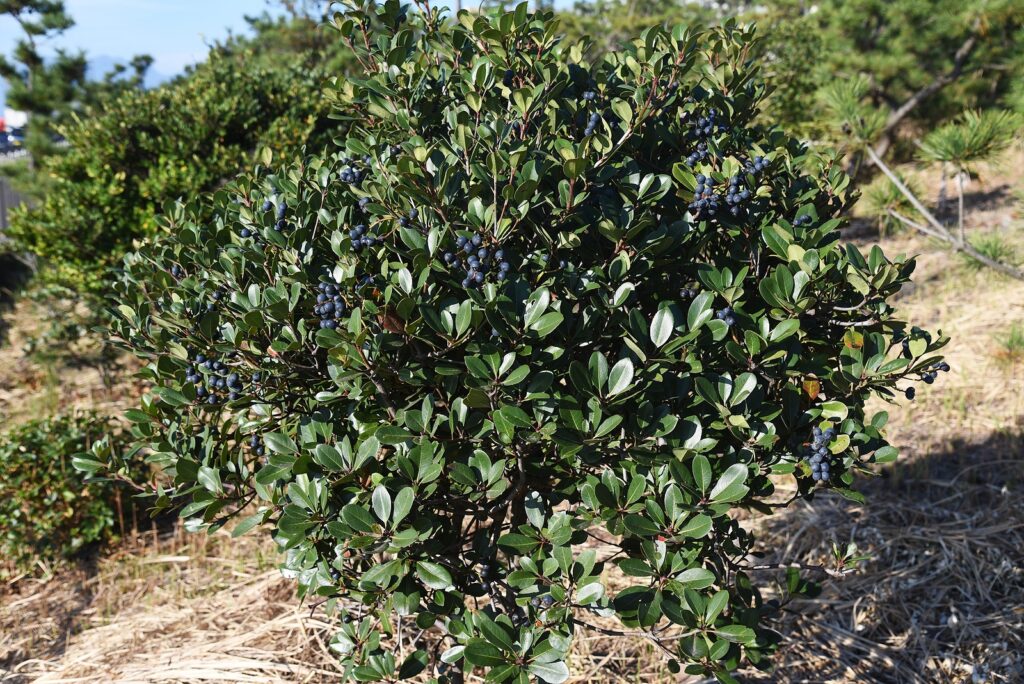
Where to plant Rhaphiolepis
- Grow Rhaphiolepis in full sun or part shade; plants in part shade are less compact and produce fewer flower than those in full sun.
- Plant Rhaphiolepis in neutral to slightly acid well-drained soil.
- Rhaphiolepis will tolerate some drought and salt.
When to plant Rhaphiolepis
- Set Rhapiolepis in the garden in spring or fall.
Planting and spacing Rhaphiolepis
- Space Rhaphiolepis 4 to 8 feet (1.2-2.4m) apart depending on variety.
How to water and feed Rhaphiolepis
- Keep the soil evenly moist for best growth. Water sparingly in winter.
- Fertilize Rhaphiolpis lightly as growth begins in spring.
- Fertilize plants in containers monthly with a balanced liquid fertilizer.

Rhaphiolepis care
- Mulch around Rhaphiolepis to conserve soil moisture.
- Pruning and pinching out new growth can keep Rhaphiolepis bushy and compact. Pinch or prune after flowering.
Rhaphiolepis pests and diseases
- Rhaphiolepis is prone to attack by scale; aphids occasionally attack.
- Fireblight and fungal leaf spot can be a problem in cool, wet weather.
Rhaphiolepis propagation
- Propagate Rhaphiolepis from seeds cleaned of pulp.
- Root semi-ripe cuttings in late summer.
- Layer Rhaphiolepis in autumn.
Rhaphiolepis varieties to grow
- Rhaphiolepis cultivars: Rhaphiolepis cultivars are widely grown: ‘Ballernia’ grows to 2 feet tall and 4 feet wide with deep rosy pink flowers; ‘Clara’ 3 to 5 feet tall and wide with white flowers; ‘Dancer’ grows to 4 feet tall with pink flowers; ‘Enchantress’ grows to 3 feet tall and 5 feet wide with rose-pink flowers; ‘Indian Princess’ grows to 3 fee tall with light pink flowers; ‘Jack Evans’ grows to 4 feet tall with bright pink flowers; ‘Majestic Beauty’ grows to 15 feet tall as a shrub or small tree with light pink flowers.
- R. indica, Indian hawthorn: Species grows to 5 feet tall with pink-tinged white flowers.
- R. umbellata, Yeddo hawthorn: Dense mound grows to 6 feet tall and wide with broad oval leaves at ends of branches; dark blue-green leaves sometimes turn bronzy purple in winter; white flowers borne on upright panicles in mid-spring.

